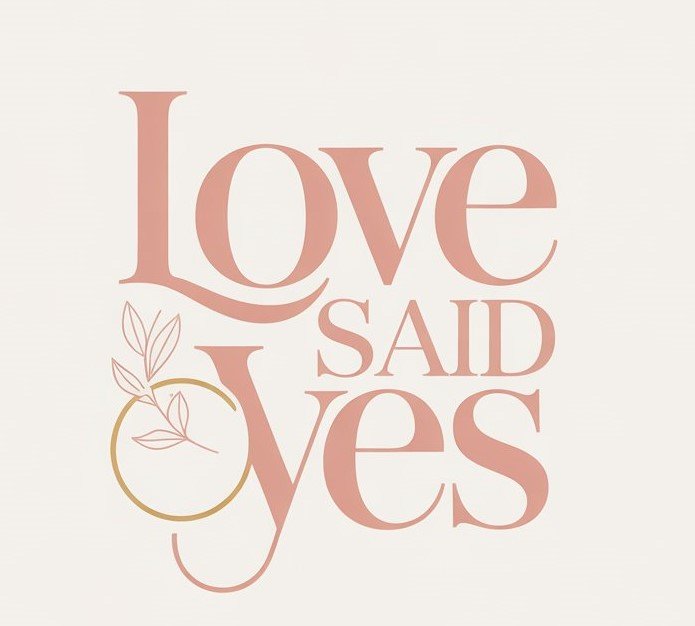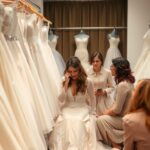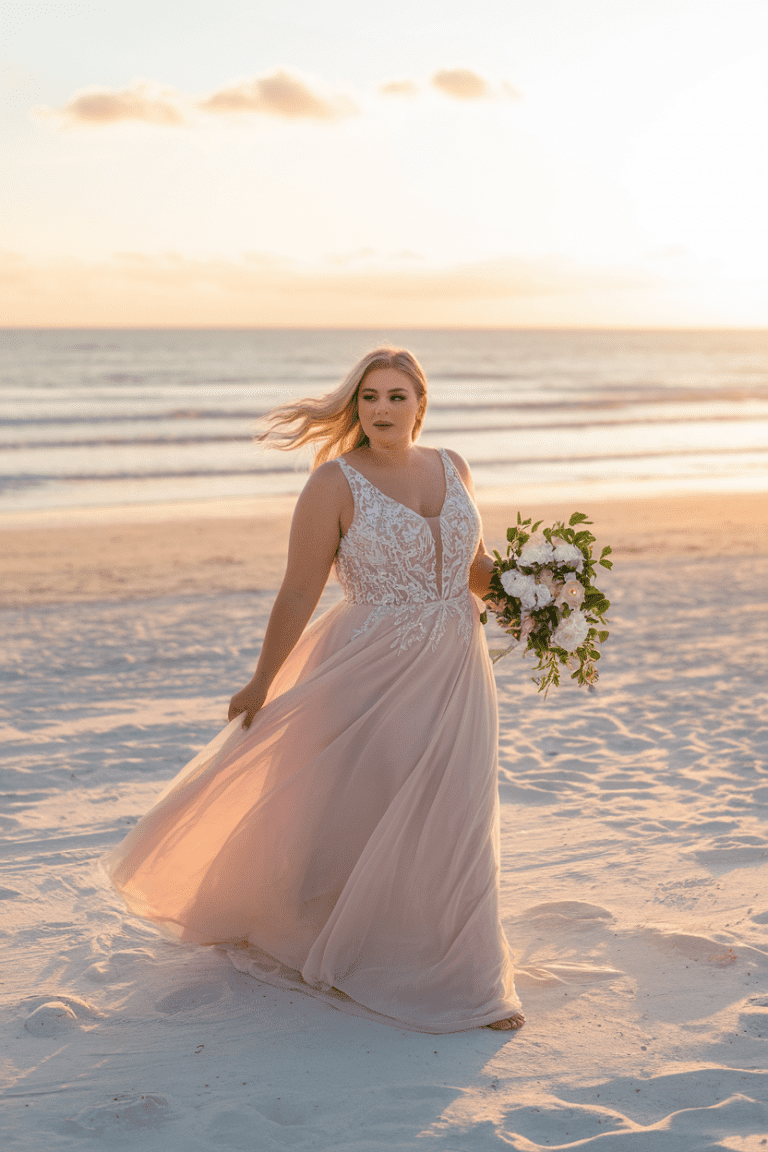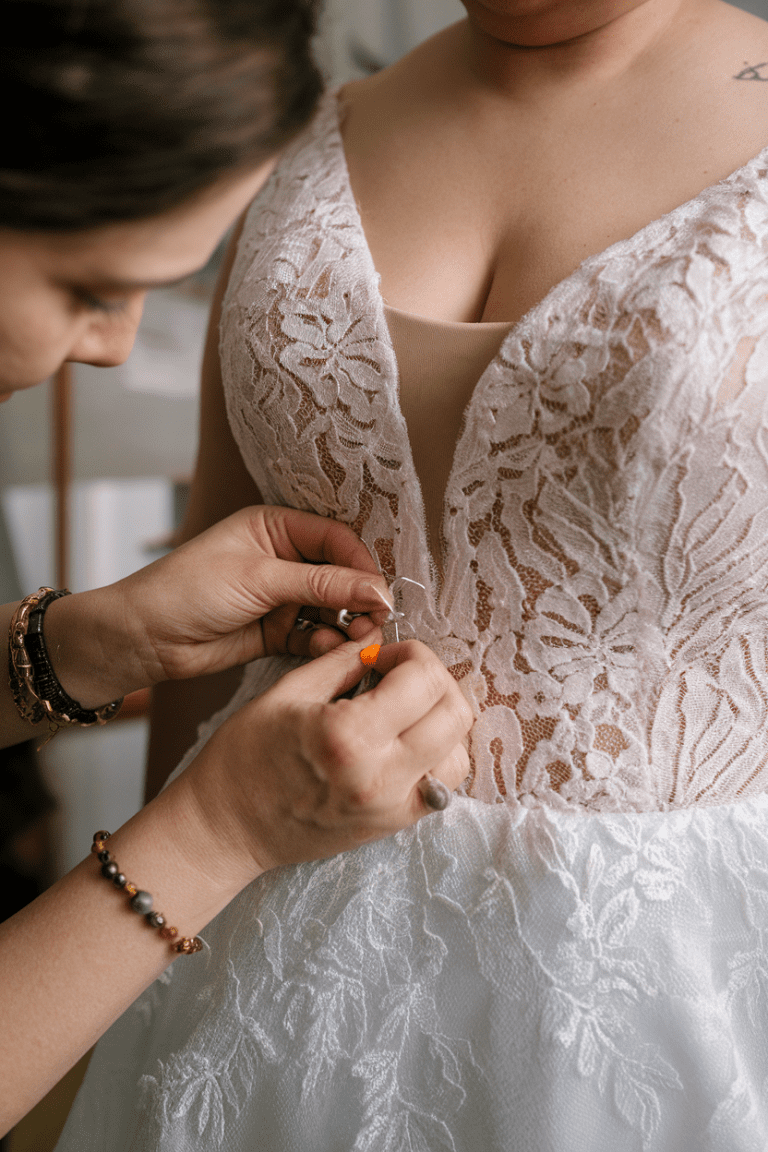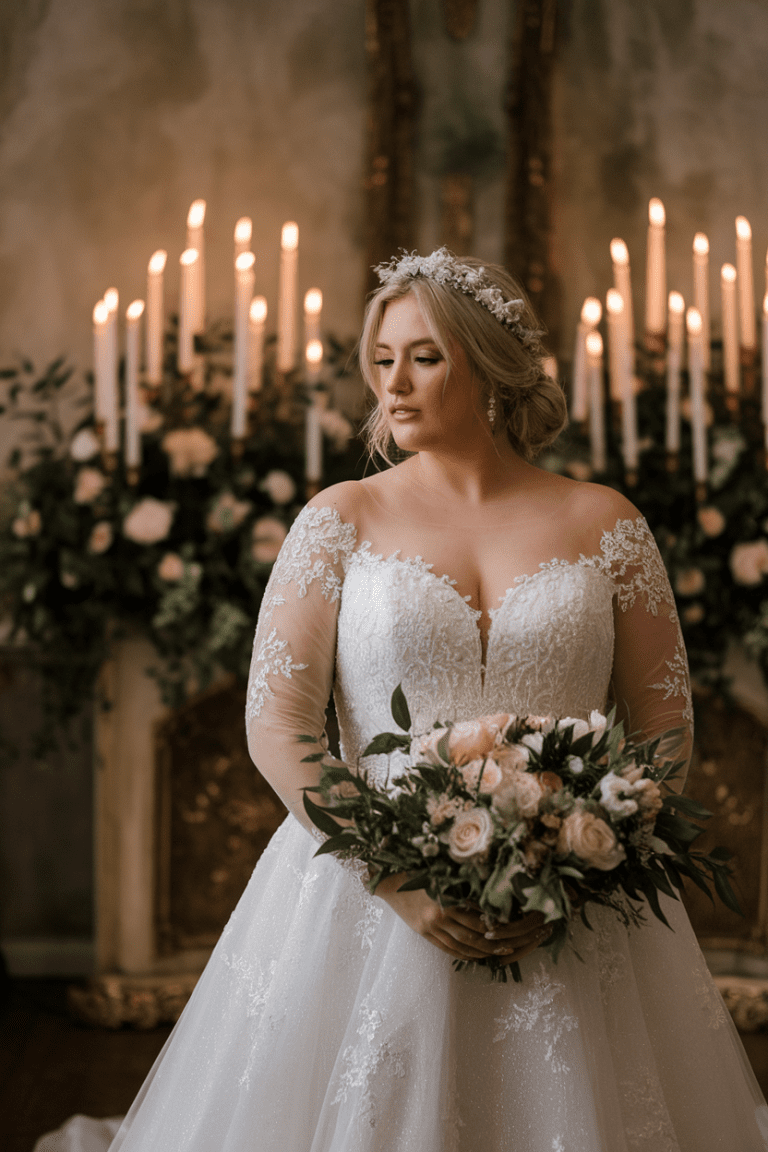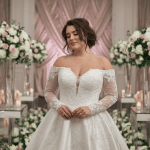For decades, bridal fashion has been dominated by a singular vision of beauty: slim silhouettes, sample sizes, and mannequins that rarely reflected the diversity of real brides. This lack of representation sent a subtle yet powerful message that only one type of body was worthy of being celebrated in lace, satin, and tulle. For many curvy brides, the search for a wedding dress was not just about finding a gown but about navigating an industry that often overlooked their existence. Yet in recent years, the tide has begun to turn. Plus size bridal fashion has emerged not as a niche but as a growing movement redefining what it means to be beautiful, confident, and radiant on one of life’s most significant days.
Representation in bridal fashion matters because a wedding dress is more than fabric and stitching—it is a cultural symbol of love, identity, and belonging. When plus size brides see themselves reflected in campaigns, runway shows, and boutique displays, it validates their experiences and affirms their worth. This visibility is not only empowering on a personal level but also transformative on a societal scale. The rise of plus size wedding dresses is a story of inclusion, progress, and a long-overdue acknowledgment that every bride deserves to shine.
Breaking the Sample Size Barrier
One of the biggest challenges curvy brides have historically faced is the limited range of sample sizes available in bridal salons. For years, most boutiques carried only gowns in sizes 6 to 10, forcing plus size brides to imagine how a too-small dress might look once altered. This exclusion was not just inconvenient—it was deeply discouraging. Brides often left fittings feeling invisible or unworthy, their excitement dampened by an industry that did not accommodate them. Today, however, designers and retailers are beginning to break this barrier. More boutiques now carry extended sample sizes, allowing brides to try on gowns that actually fit their bodies. This simple but powerful shift changes the entire experience. Brides no longer have to visualize—they can see, feel, and move in a gown designed with them in mind. By expanding sample sizes, the bridal industry is taking a critical step toward true inclusivity, ensuring that no bride is excluded from the joy of dress shopping.
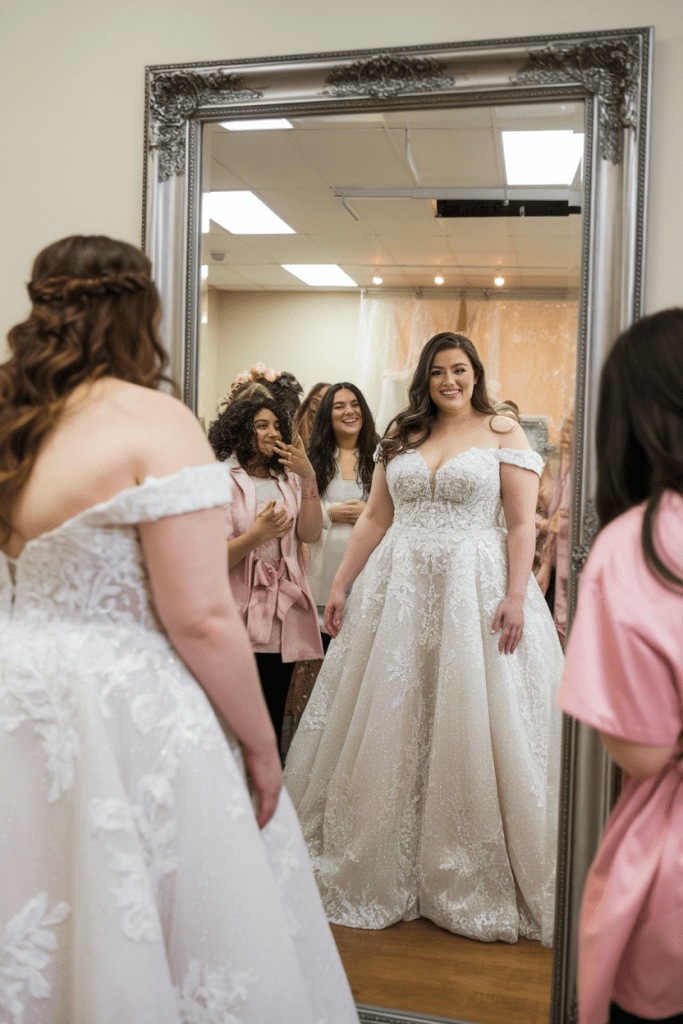
Designers Embracing Inclusivity
The rise of plus size bridal fashion has been fueled in part by designers who recognize the demand for inclusivity. Bridal heavyweights and emerging labels alike are expanding their collections to include gowns in sizes 16 and beyond, with designs that celebrate rather than conceal curves. These gowns are not afterthoughts or scaled-up versions of smaller dresses—they are created with intention, featuring supportive structures, thoughtful silhouettes, and luxurious fabrics that flatter fuller figures. This attention to detail reflects a broader cultural shift in fashion, where inclusivity is no longer optional but essential. Designers who embrace inclusivity are not just catering to a market—they are rewriting the narrative of beauty and redefining industry standards. For plus size brides, this means stepping into a gown that feels both stylish and supportive, knowing it was made with them in mind from the very first sketch.
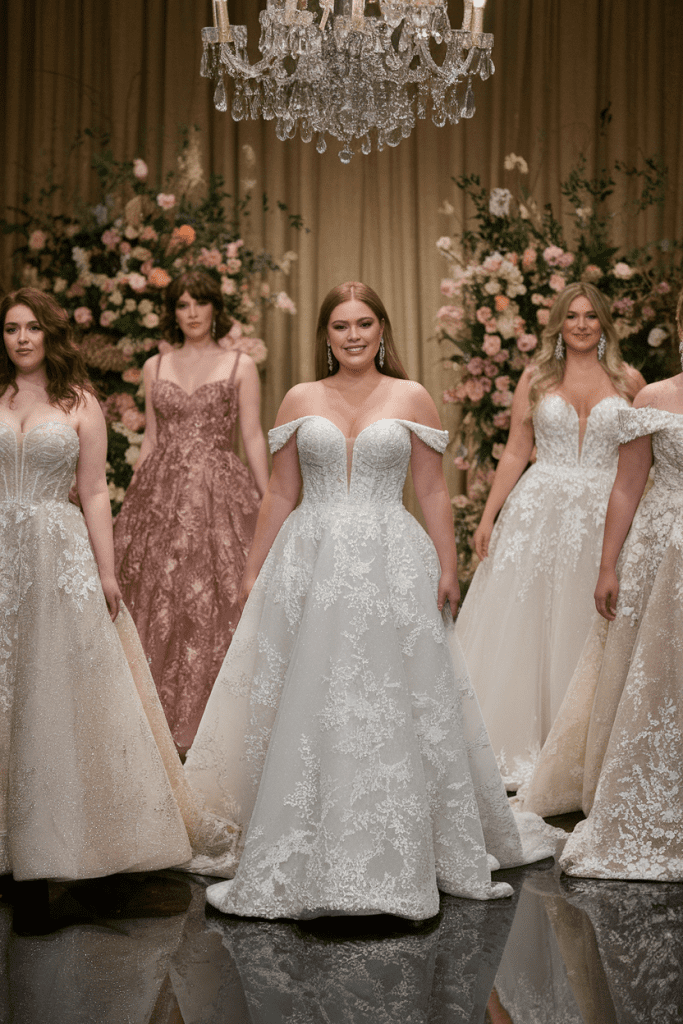
Media Representation and Visibility
Representation in media plays an equally vital role in shaping bridal fashion. For too long, bridal magazines, advertising campaigns, and online galleries showcased only slim models in gowns, reinforcing a narrow and unrealistic beauty standard. This lack of visibility left many brides feeling marginalized, as though their bodies did not belong in the imagery associated with weddings. In recent years, however, there has been a conscious effort to diversify representation. Plus size brides are increasingly featured in editorials, social media campaigns, and bridal fashion shows. This visibility matters—it challenges stereotypes, inspires confidence, and provides much-needed inspiration for brides who want to see how gowns look on bodies like theirs. The media’s embrace of plus size bridal fashion is a crucial step in normalizing body diversity, proving that beauty and love come in all shapes and sizes.
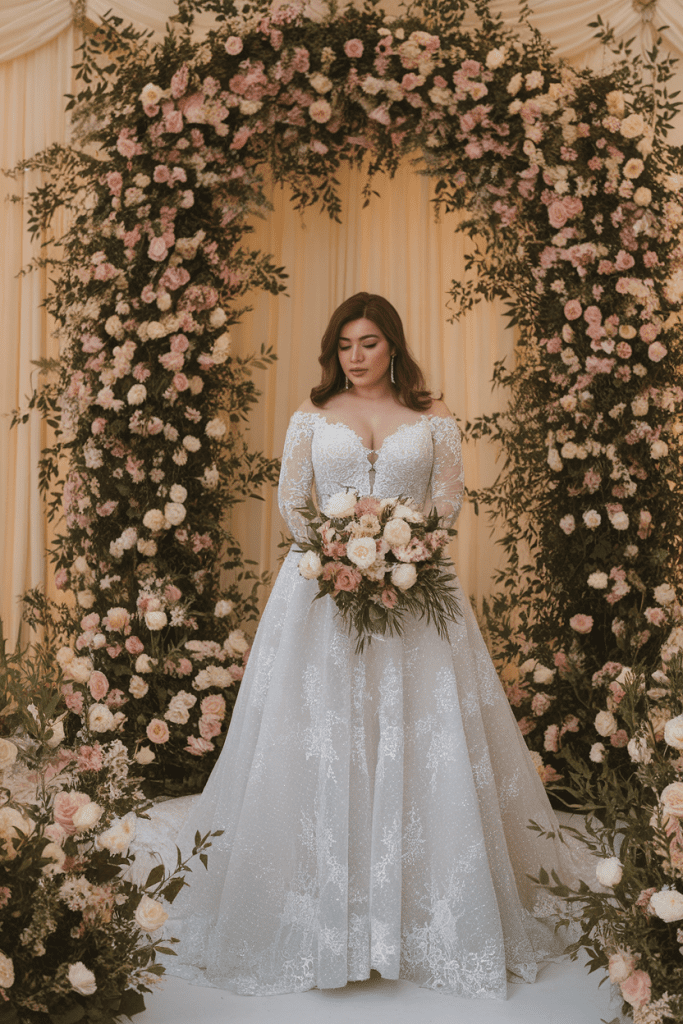
The Emotional Impact on Brides
Representation in bridal fashion is not just an industry issue—it has a profound emotional impact on individual brides. For many women, the wedding day is one of the most significant milestones of their lives, and the dress they wear becomes a symbol of that memory. When a bride finds a gown that fits beautifully and reflects her style, it affirms her confidence and allows her to embrace the spotlight without hesitation. Conversely, when the industry excludes or overlooks curvy brides, it sends a painful message of unworthiness. The rise of plus size wedding dresses changes this narrative. It tells brides that they are seen, valued, and celebrated exactly as they are. The emotional shift is profound—brides who once dreaded dress shopping now describe it as empowering, joyful, and deeply affirming. Representation is not about vanity—it is about dignity, inclusion, and love.
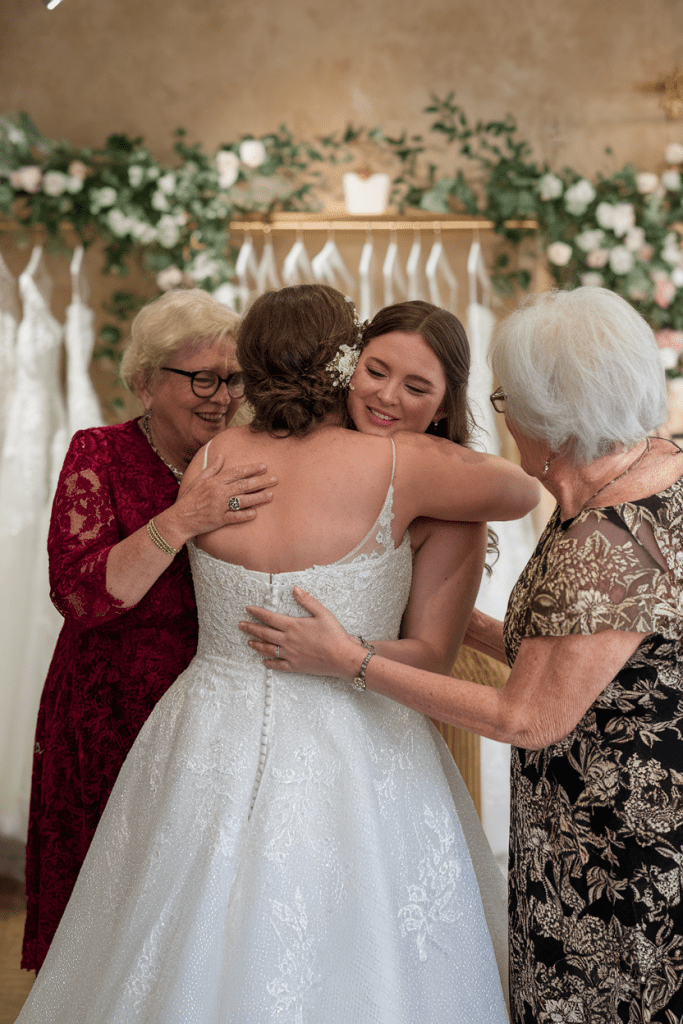
The Road Ahead for Bridal Fashion
While progress has been made, the journey toward full inclusivity in bridal fashion is far from over. Many boutiques still carry limited plus size samples, and some designers continue to treat extended sizing as an afterthought. True representation will require ongoing commitment from all corners of the industry: designers, retailers, media outlets, and even consumers who demand better. Yet the momentum is undeniable. With every new plus size collection, every inclusive campaign, and every empowered bride who shares her story, the industry moves closer to a future where all brides are equally celebrated. The road ahead is not about token gestures but about systemic change, where inclusivity is not a trend but a standard. And when that day comes, the bridal industry will truly reflect the diversity and beauty of the brides it serves.
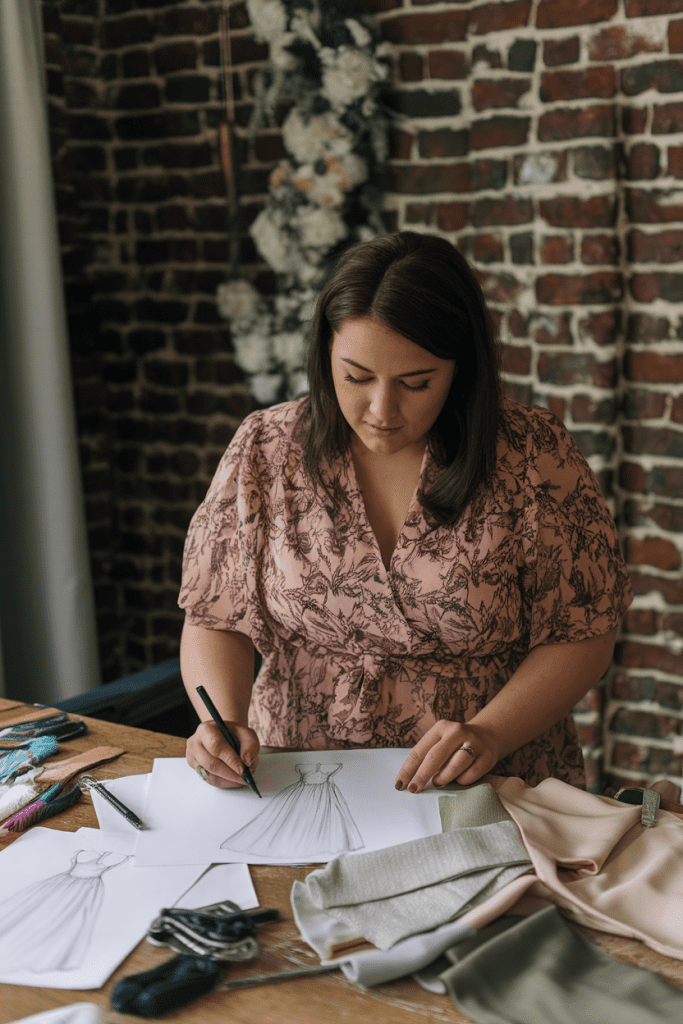
Final Thoughts
Representation in bridal fashion matters because weddings are not just about love—they are about visibility, acceptance, and celebration. The rise of plus size wedding dresses is more than a shift in fabric and sizing; it is a cultural transformation that honors the beauty and dignity of all brides. As designers, retailers, and media outlets continue to embrace inclusivity, more brides will experience the joy of finding a dress that not only fits but feels like it was made for them. In the end, representation ensures that every bride, regardless of size, has the chance to walk down the aisle feeling radiant, confident, and fully herself.
